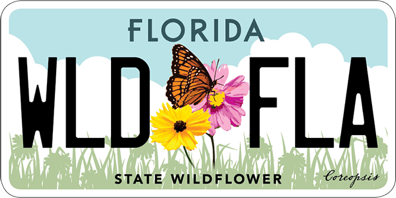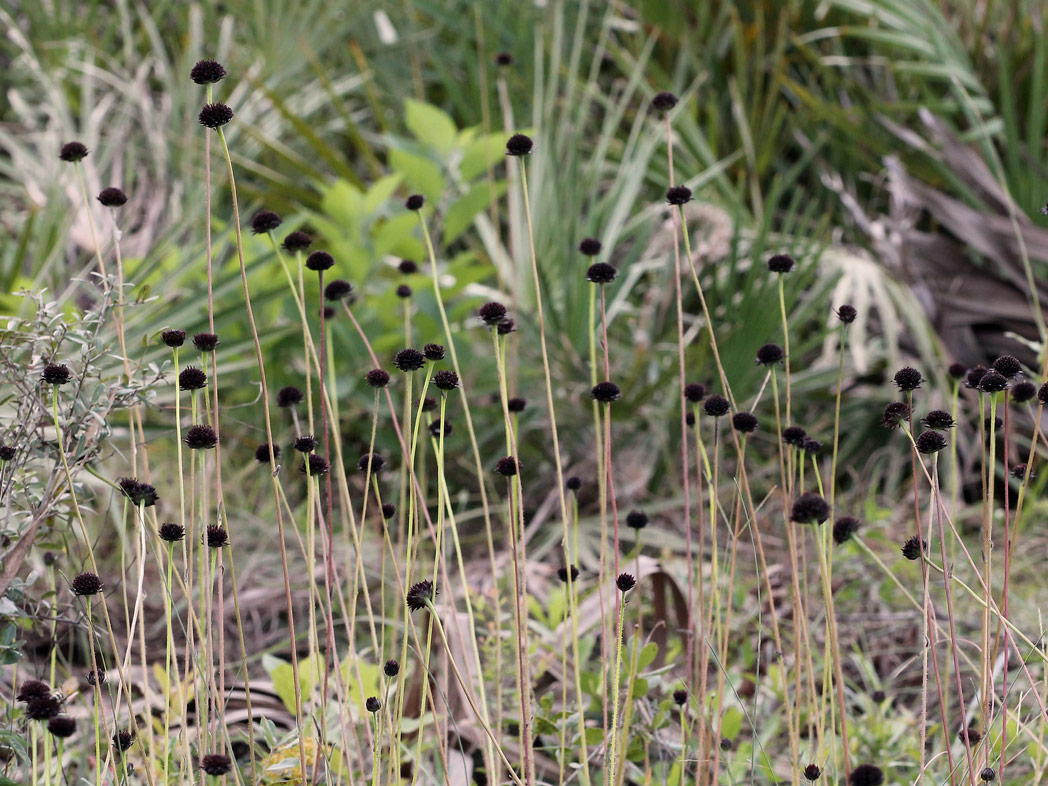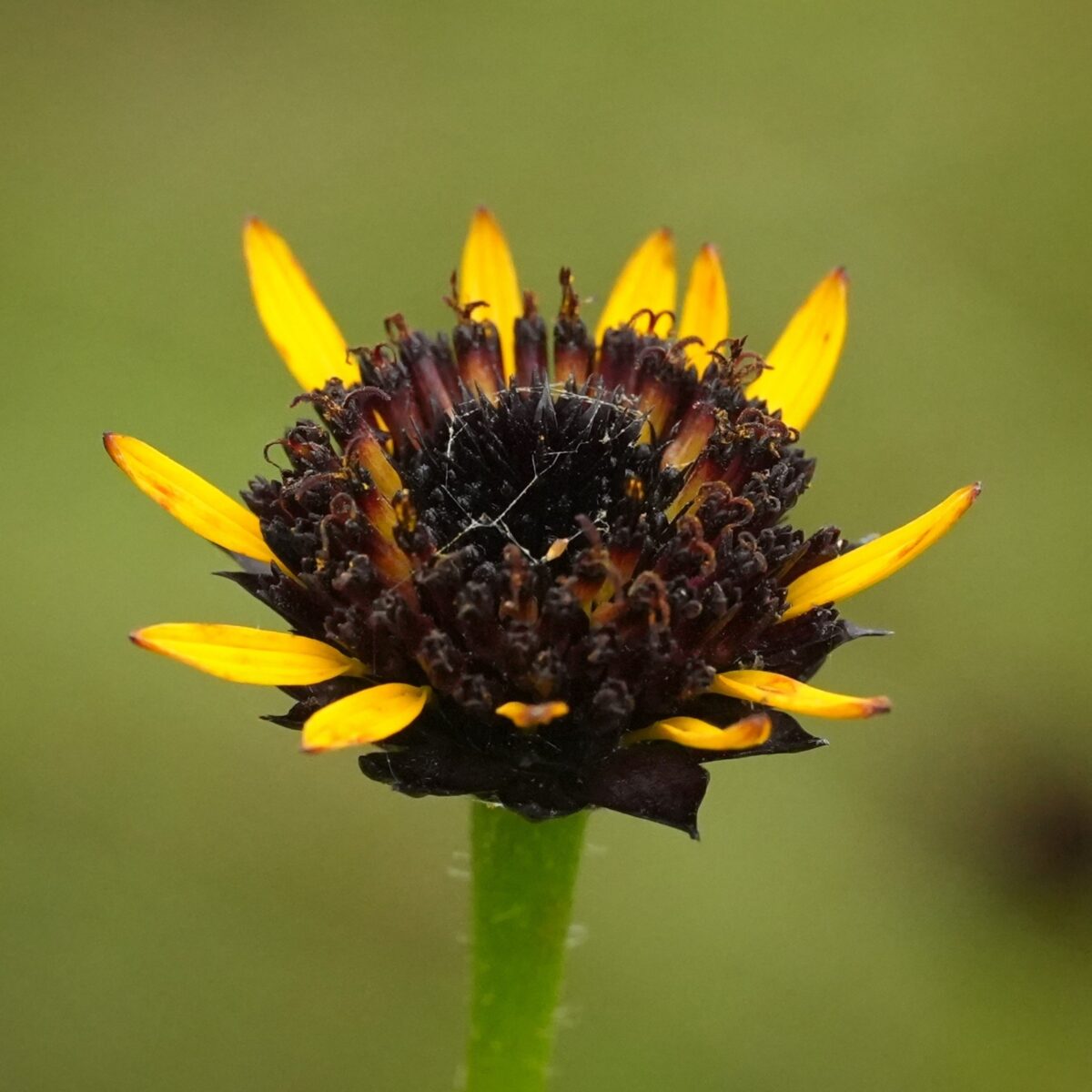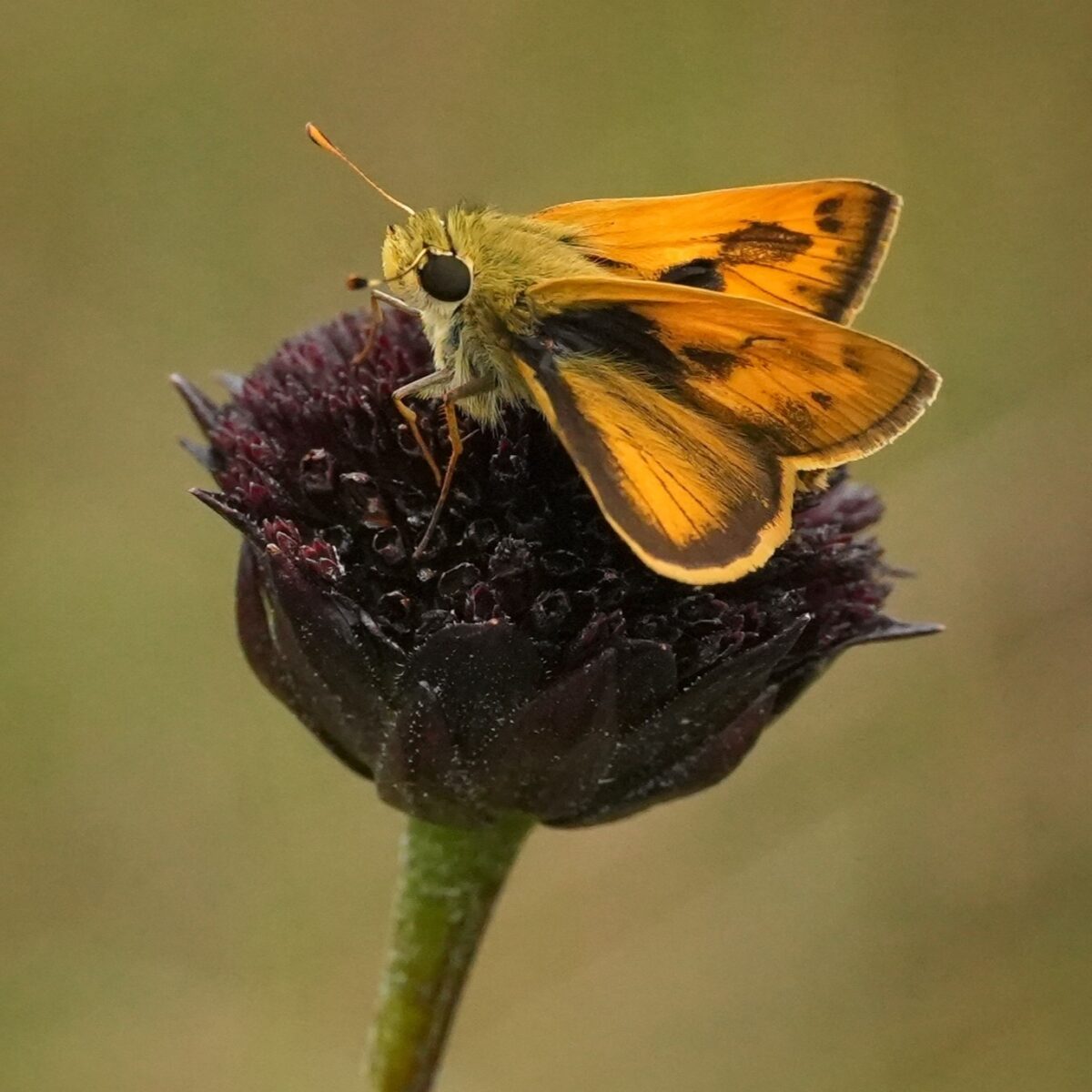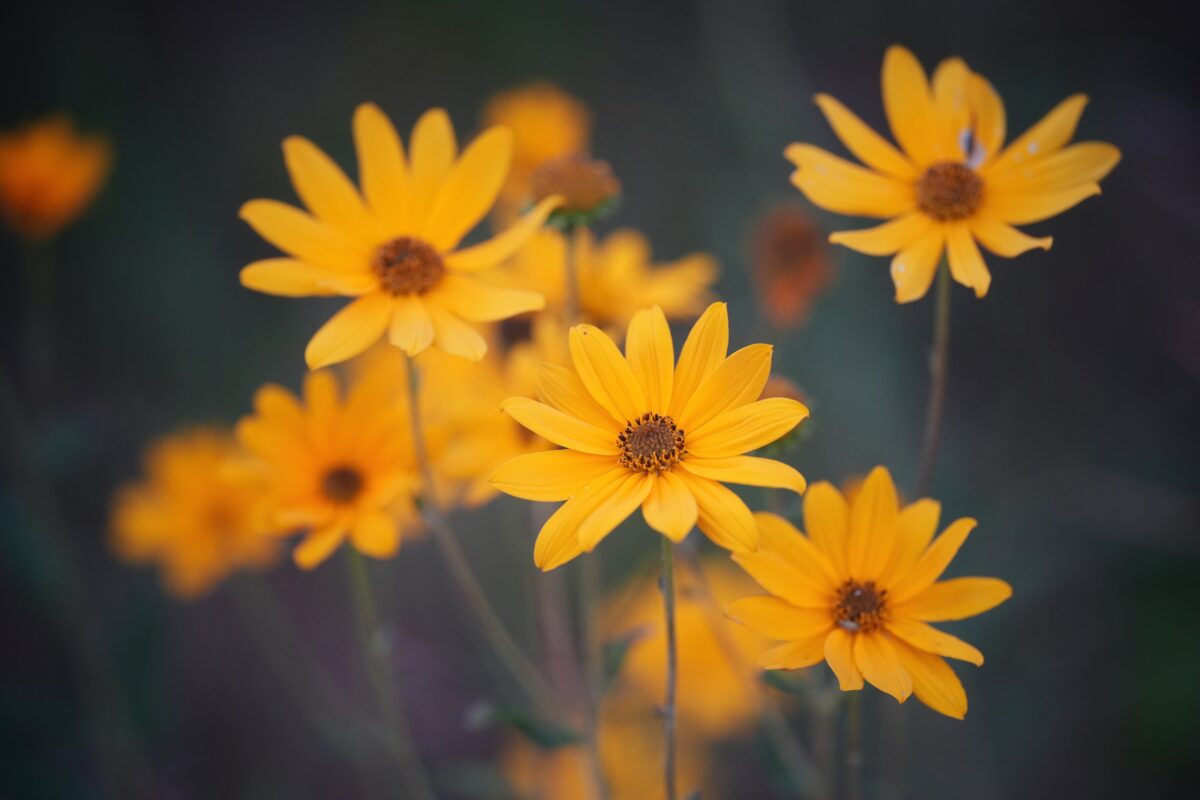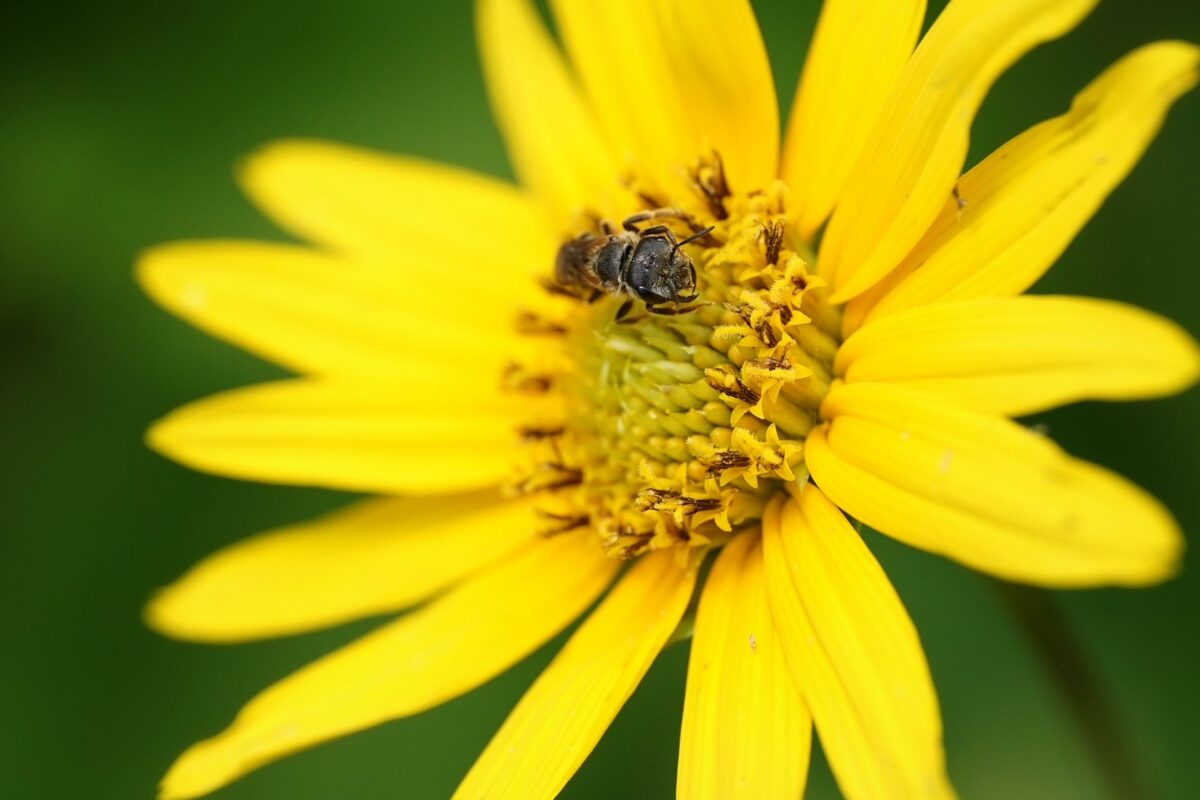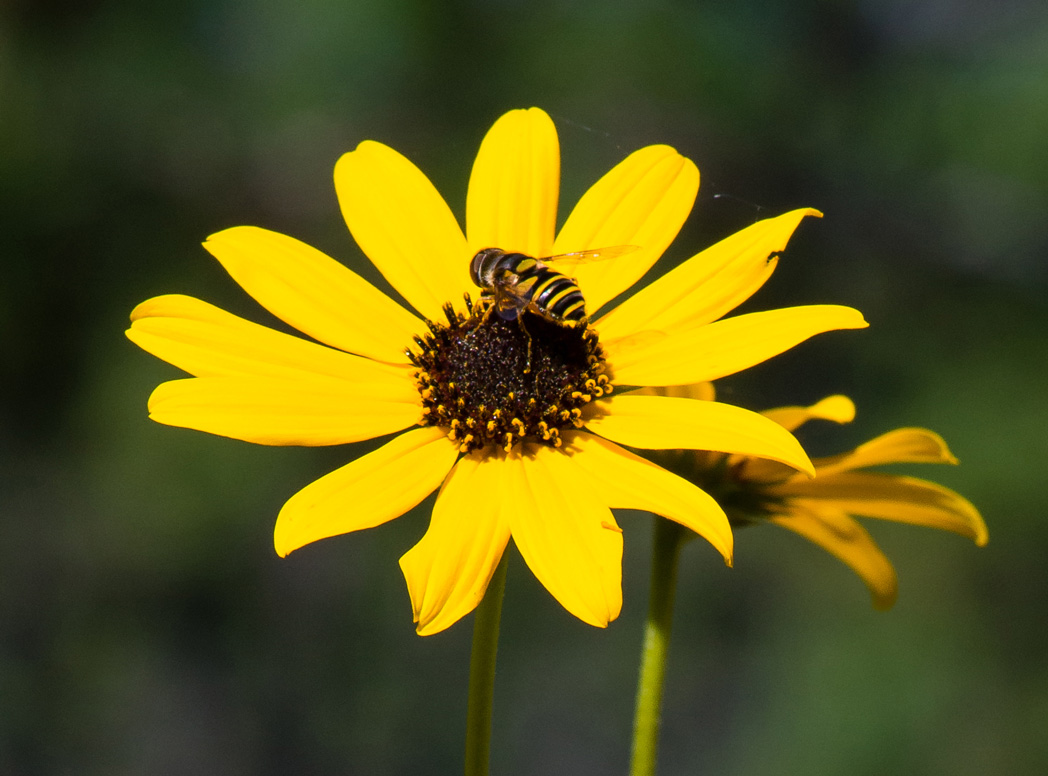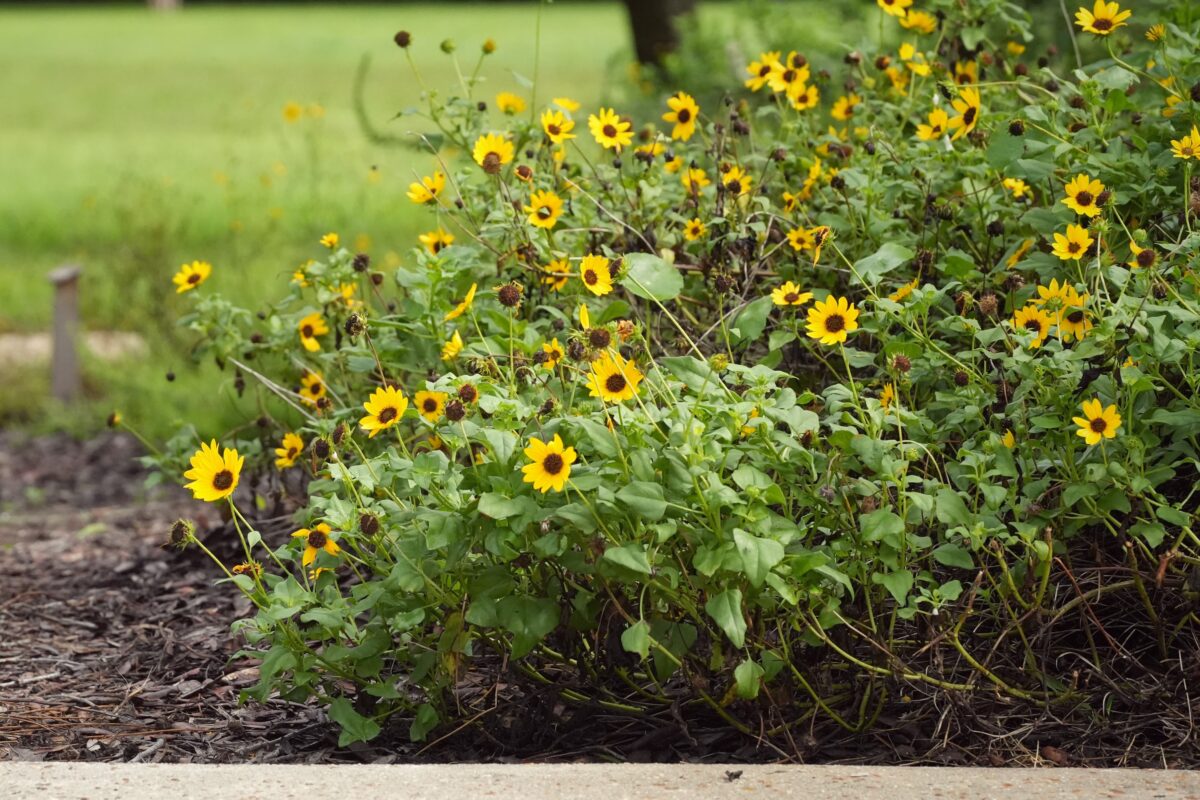Rayless sunflower
Pictured above: Rayless sunflower (Helianthus radula) blooming in Tosohatchee Wildlife Management Area by Mary Keim. Click on terms for botanical definitions. View post as a PDF.
Rayless sunflower (Helianthus radula) occurs naturally in pine flatwoods and seasonally wet savannahs and along moist to dry roadsides. It typically blooms late spring into early fall, attracting a wide variety of butterflies and other pollinators. Birds and small animals eat the seeds.
Each solitary flowerhead includes a compact but relatively large center composed of many small, dark maroon disk florets accented with yellow stamens. Ray florets are almost entirely absent. (Some specimens do produce a few small yellow ray florets.) Basal leaves are thick and rounded with a rough, hairy surface. Stem leaves are few, elliptic to ovate, and hairy and become reduced in size as they ascend the stem. They are oppositely arranged. Stems also are hairy.
The genus name Helianthus is from the Greek helios, or “sun,” and anthos, or “flower.” The species epithet radula is from the Latin radula, meaning “scraper,” referring to the roughness of the leaf surfaces.
Family: Asteraceae (Aster, composite or daisy family)
Native range: Panhandle, most of Central and North Florida, and Collier County
To see where natural populations of Rayless sunflower have been vouchered, visit florida.plantatlas.usf.edu.
Lifespan: Perennial
Soil: Somewhat dry to very moist sandy or loamy soils
Exposure: Full sun to partial shade
Growth habit: 1–2′ tall
Propagation: Seeds
Florida regions of landscape suitability: North, Central
Garden tips: Appreciate Rayless sunflower for its unusual flowerheads and large basal leaves. It is a great addition to a home pollinator garden, as it easily adapts to a variety of conditions and will attract butterflies as well as other pollinators. It does best in open, sunny areas. Plant with a mix of Chalky bluestem or Muhlygrass for a striking display.
Rayless sunflower seeds are sometimes available through the Florida Wildflower Growers Cooperative. Plants are often available at nurseries that specialize in native plants. Visit PlantRealFlorida.org to find a native nursery in your area.
Learn more about Rayless sunflowers from the Florida Native Plant Society and the Institute for Regional Conservation
For information on other Helianthus species, see these resources:
